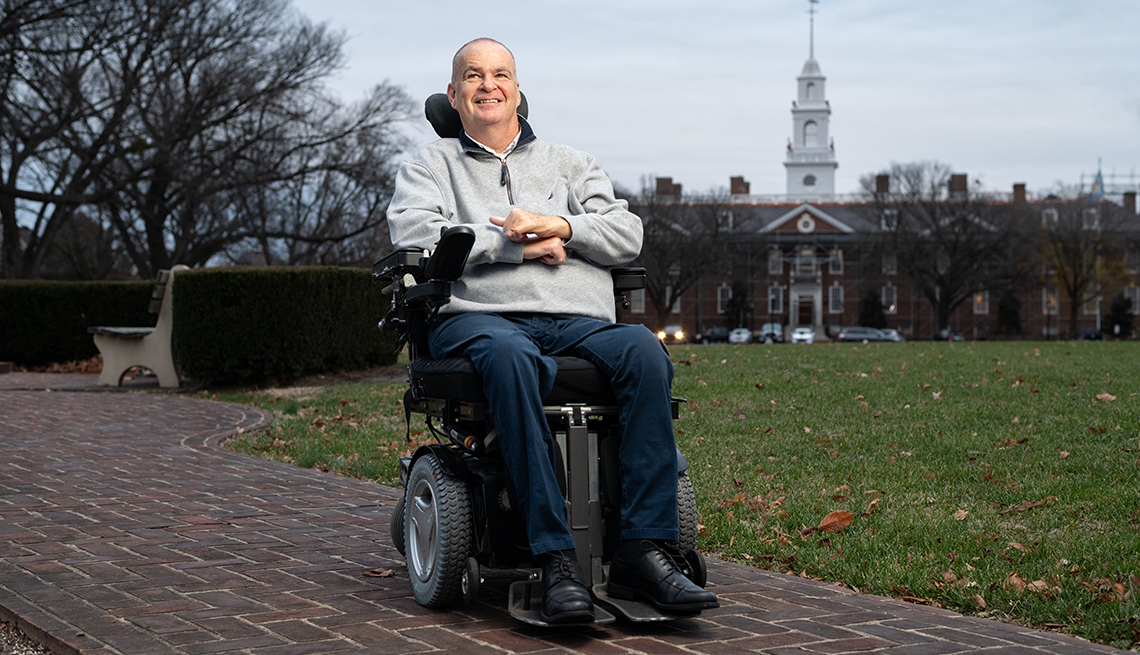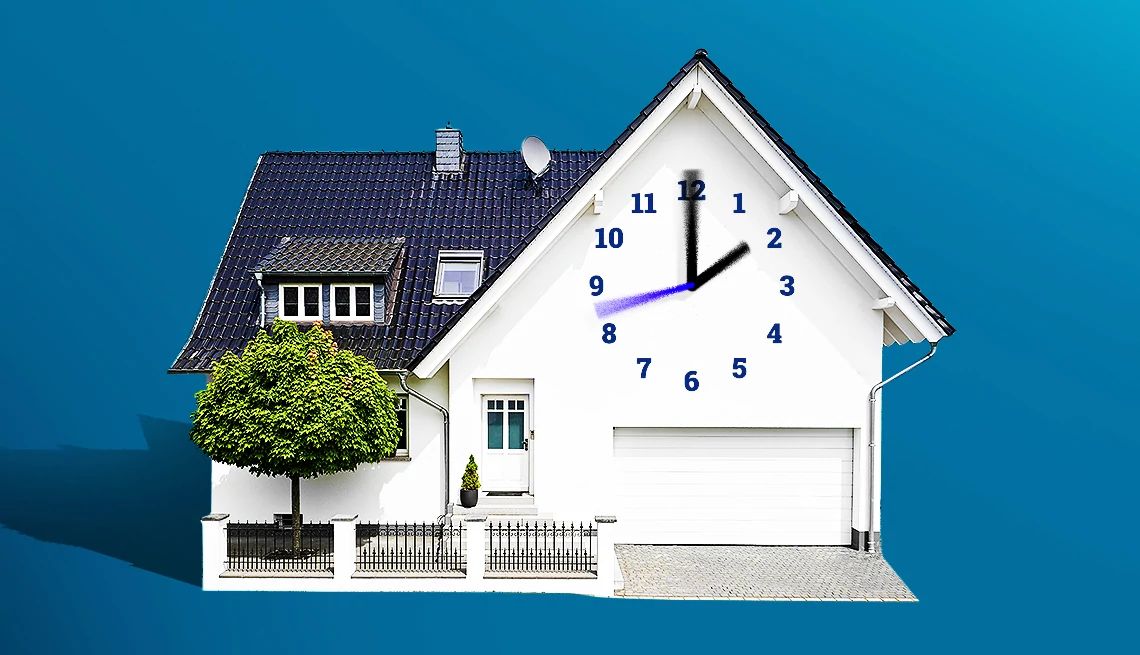AARP Eye Center

John McNeal, who was paralyzed from the neck down after a motorcycle accident in 1990, likes to brag about his “extraordinarily ordinary” life. The 55-year-old from Dover, Delaware, goes to work every day, helps his 8-year-old son with basketball drills and watches his beloved Philadelphia Eagles with friends at Buffalo Wild Wings.
McNeal does so with the assistance of direct-care workers who help him get dressed in the morning, fix his meals and drive him where he needs to go.
“My life is unique in that I have a significant disability,” says McNeal, director of Delaware’s State Council for Persons with Disabilities. But, he says, it’s “a productive life that is every bit as normal as anybody else’s.”
Across the country, states such as Delaware are spending a growing percentage of long-term care funding to keep people in their homes and communities instead of institutional settings. That’s according to AARP’s most recent Long-Term Services and Supports State Scorecard, which uses 50 spending, quality and access indicators to rank each state’s long-term care system.
The new data shows that for the first time since AARP began publishing the Scorecard in 2011, more than half of Medicaid’s long-term care dollars nationally for older people and adults with physical disabilities went to home- and community-based services instead of nursing homes or other facilities.
EXPLORE: AARP Long-Term Care Scorecard
“This is a big deal. We are seeing a breaking point,” says Susan Reinhard, senior vice president of the AARP Public Policy Institute, which published the Scorecard in September.

The shift to home- and community-based services comes as demand for such care has increased, fueled in part by a pandemic that took a horrific toll on nursing home residents. Polls have consistently shown that most older Americans want to age in place. A 2021 AARP survey found that more than three-quarters of adults 50-plus say they want to remain in their homes as they grow older.
But with America’s population of older adults growing, the chasm between the availability of HCBS and access to such services is poised to widen.
“We’re going to see a dramatic increase in the 80-plus and 85-plus population” as the boomer generation gets older, says Robert Applebaum, a senior research scholar at Miami University’s Scripps Gerontology Center in Ohio. “So the demand for long-term services ... is going to be tremendous.”
A person-centered approach
In the Mid-Atlantic region, Delaware, the District of Columbia, Maryland, New Jersey and West Virginia have all increased the percentage of their Medicaid dollars going to HCBS for older people and adults with physical disabilities in recent years, the Scorecard shows. One way they are doing that: giving more older adults the power to direct their own care, funded through Medicaid initiatives. (Medicaid, a joint federal-state program for low-income Americans, includes coverage for nursing homes and other long-term care.)
Enrollment in these “self-directed” care programs increased by 10 percent or more across 34 states and the District of Columbia in recent years, the Scorecard shows. Such programs give people a greater say over how to spend government dollars on their own care.

“It’s like the ultimate person-centered approach,” says Lisa Alecxih, who researches long-term care for The Lewin Group, a health care and human services consulting firm. She notes that such programs often have the added benefit of allowing participants to hire family members as caregivers. That’s crucial because there’s a national shortage of direct-care workers.
Applebaum says his research on self-directed programs has also shown the satisfaction levels were “beyond anything I’ve ever seen as an evaluator.”
McNeal, the Delaware disability advocate, says that’s certainly true for him. “This is probably the most important program that has come into my life,” he says. “It has allowed me the opportunity to have everything that anybody else in the community has.”
Growing demand, workforce crunch
Self-directed services are one of many state-level innovations highlighted in the Scorecard as a way states can meet the growing demand for home- and community-based care. In the Mid-Atlantic region, D.C., Virginia and New Jersey posted the highest numbers of people enrolled in self-directed programs relative to their disabled populations.
Pennsylvania is the only state in the region that did not see an increase, but that could change as Jason Kavulich—who became Pennsylvania’s Secretary of Aging in January 2023—leads the state’s effort to develop a 10-year master plan for aging. “It is our top-most priority to make sure that people can age in place, how they choose, and to make sure that the services that we have really are responsive,” Kavulich says.

One of the biggest challenges states face in expanding HCBS is the shortage of direct-care workers to fill those jobs. The work can be emotionally and physically taxing and usually comes with low pay, poor benefits and limited support and training.
The Scorecard shows that across the U.S., wages for direct-care workers are lower than in jobs with similar or lower entry requirements. Their median income is about $30,000 a year—approximately $5,000 less than workers in comparable jobs are paid in most states. D.C. has the highest wage gap in the country, with direct-care workers earning $5.03 less per hour than their counterparts in other sectors.
“I’m in competition with fast-food places. It’s as simple as that,” says 63-year-old Keith Williams of Clarks Green, Pennsylvania, outside Scranton. He was born with arthrogryposis, a combination of conditions that causes joint contractures and weak muscles.
Through a self-directed program, he hires care workers to help him with everything from showering to eating. He recruits through word of mouth and online postings. When that fails, he hires his sister-in-law.
It’s not easy, says Williams, the manager of independent living services for the Northeast Pennsylvania Center for Independent Living, a community-based organization staffed in part by people with disabilities. But the control he has over his care has allowed him to have a meaningful life.
“It’s meant that I’ve been able to live life on my own terms,” he says.
Ann Hardie spent a decade covering aging issues for The Atlanta Journal-Constitution. She has written for the Bulletin for 15 years.
More on Home Care
- Care Companions: A Watchful Eye and Willing Ear for Older Adults
- Find the Right Home Aide for Your Loved One
- AARP Survey: 8 in 10 Older Adults Want to Age at Home































































